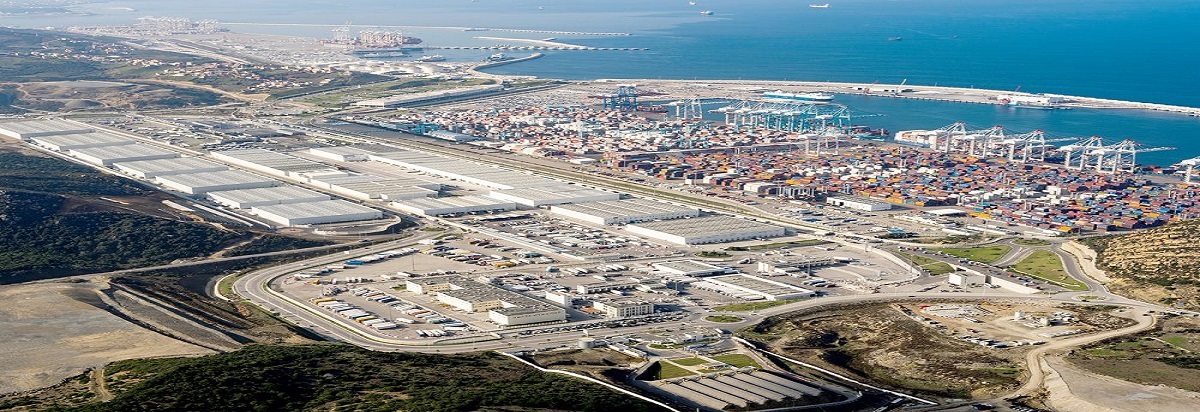Supply chains and climate change are inextricably linked. Supply chains – including those needed to distribute lifesaving medicines – are being disrupted by extreme, unpredictable weather conditions associated with climate change. Events linked to climate change not only disrupt healthcare supply chains but are also triggering diseases and humanitarian crises. While supply chains are threatened by climate change, they are also contributing to it because they produce vast amounts of greenhouse gases and waste.
The critical and complex interconnectedness of climate change and supply chains – particularly healthcare supply chains – was in the spotlight at the 2023 SAPICS Conference, Africa’s leading event for the supply chain profession. This year’s 45th SAPICS Conference was co-hosted by The Professional Body for Supply Chain Management (SAPICS) and the South African Association of Freight Forwarders (SAAFF). More than 700 supply chain practitioners from 32 countries across Africa and around the world gathered in Cape Town to share knowledge and network.
Rising temperatures, more extreme weather, rising sea levels and increases in carbon dioxide levels are all affecting human health and therefore impacting healthcare supply chains, explained Edward Wilson, director of health logistics at JSI and PFSCM (Partnership for Supply Chain Management). “The shifting disease burdens caused by climate change are altering the supply and demand dynamics in healthcare supply chains, while climate-related disasters disrupt supply chains. At the same time, healthcare’s climate footprint is 4.4% of global net greenhouse gas emissions. This means that if the health sector were a country, it would be the fifth-largest emitter in the world,” he stated.
Wilson told SAPICS Conference delegates that 71% of the emissions from healthcare are linked to the supply chain, including the production, transport and disposal of pharmaceuticals and medical devices. “We who are operating in the health sector need to understand and appreciate that we are also making a contribution to climate change through the work that we’re doing and think about how we can mitigate that impact,” he stressed.

To help SAPICS Conference attendees do this, Wilson’s co-presenter Deborah Dull shared her insights on what supply chain activities cause emissions. Dull is the vice president and global supply chain sustainability leader at Genpact. Corporate supply chains and consumers using the commodities that they produce are responsible for some 90% of carbon emissions – known as Scope 3 emissions, she said. Dull used the key supply chain steps to produce tea as an example, outlining the emissions from growing, processing, packaging, distributing and using tea. Growing tea accounts for 15 percent of the carbon emissions; processing tea produces eight percent; packaging results in 18 percent of the emissions; and distributing the tea 13 percent. Using tea produces 46 percent of the emissions.
“The materials in supply chains, the energy and fuel are what is causing the most emissions – usually in that order,” Dull expanded. She advised SAPICS delegates to consider “finance-grade” climate data for each product line and each product type. “Use this ‘emissions per unit’ similarly to a cost per unit analysis and scenario planning. Apply problem solving approaches to decouple emissions from business growth. Maybe a change in packaging could help reduce transportation requirements and transportation costs; perhaps it could reduce the amount of waste that needs to be processed at the end.
“Compare internal business units to identify risks or hot spots. Look at what your suppliers are doing and figure out how you can work with them,” Dull advised. “Collaboration across the supply chain and working with your upstream and downstream partners will enable you to have a bigger impact. Think about how you can incentivise each other to adopt more carbon-friendly practices. Benchmark across competitors and other industries to find ways to act and reduce emissions.”
Dull urged SAPICS Conference attendees to consider the energy sources for facilities like factories, warehouses and cross docks, because this is arguably where they can have the largest influence on climate change. Transitioning those buildings to using renewable energy instead is critical to reduce supply chain’s impact on climate change.
Wilson said that increasing supply chain resilience will help to manage the risk of disruptions caused by climate change and reduce supply chains’ impact on climate change. “Supply planning, capacity strengthening, and network design and optimisation must take into account shifting disease burdens, and increasingly frequent and severe climate-related disasters,” he told SAPICS Conference delegates.
The strategies recommended by Wilson to build supply chain resilience included vulnerability and risk assessments to reinforce operations before climate emergencies strike; moving production closer to demand and, in the pharmaceutical industry, expanding active ingredient production capabilities and partnering with manufacturers. He also stressed the importance of building circular economy practices throughout the supply chain.
Risk mitigation, improved business continuity and recovery times, and reduced costs are the benefits of supply chain resilience, Wilson asserted. “While a recent study found that only 11 percent of those analysed were fully prepared for climate risks, the benefits are clear. Toyota lost six months of production following a 2011 earthquake in Japan, but, after implementing a resilience strategy, lost only two weeks following a 2016 earthquake,” he said.
“Climate change is affecting the supply chain community and we are contributing to it. What we must do is understand our impact, mitigate it and build more resilient supply chains,” Wilson concluded.
ABOUT SAPICS: http://www.sapics.org
SAPICS’s mission is to elevate, educate and empower the community of supply chain professionals across Africa.
Since its foundation in 1966, SAPICS, The Professional Body for Supply Chain Management, has become the leading provider of knowledge in supply chain management, production and operations in Southern Africa. SAPICS builds operations management excellence in individuals and enterprises through superior education and training, internationally recognised certifications, comprehensive resources and a country-wide community of accomplished industry professionals. This community is ever expanding and now includes a multitude of associates in other African countries as well as around the globe. SAPICS is proud to represent the Association for Supply Chain Management (ASCM) as its exclusive premier channel partner in Sub-Saharan Africa.
The annual SAPICS Conference is the leading event in Africa for supply chain professionals.
ABOUT SAAFF: https://saaff.org.za/
The South African Association of Freight Forwarders (SAAFF) was established in 1921. For more than a century, SAAFF has played an essential role in freight forwarding and international trade, with members facilitating these activities through their dedicated involvement in the management of transportation, customs clearing, documentation, third-party payments, and many other elements of the international supply chain.






